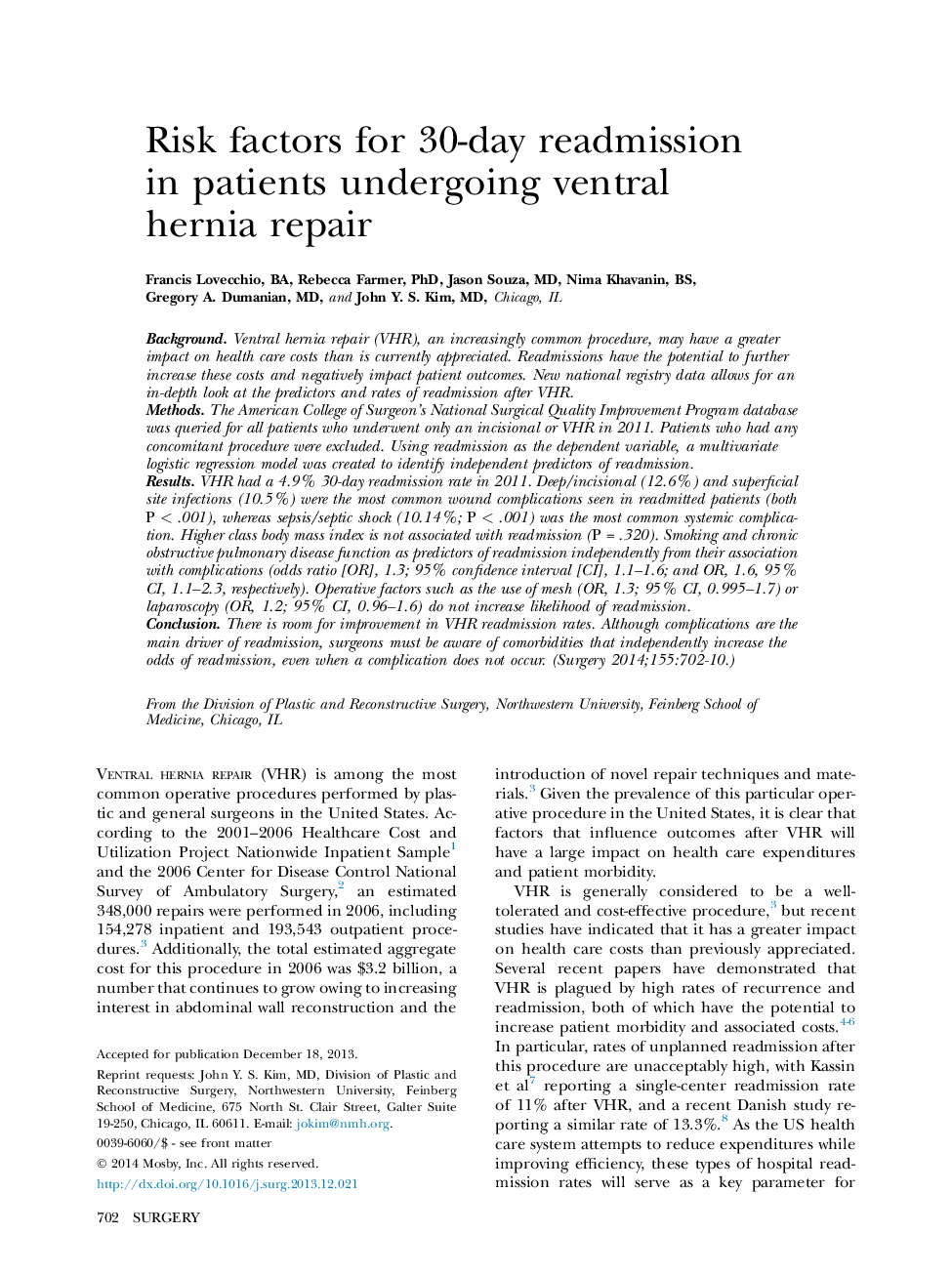| Article ID | Journal | Published Year | Pages | File Type |
|---|---|---|---|---|
| 4307288 | Surgery | 2014 | 9 Pages |
BackgroundVentral hernia repair (VHR), an increasingly common procedure, may have a greater impact on health care costs than is currently appreciated. Readmissions have the potential to further increase these costs and negatively impact patient outcomes. New national registry data allows for an in-depth look at the predictors and rates of readmission after VHR.MethodsThe American College of Surgeon's National Surgical Quality Improvement Program database was queried for all patients who underwent only an incisional or VHR in 2011. Patients who had any concomitant procedure were excluded. Using readmission as the dependent variable, a multivariate logistic regression model was created to identify independent predictors of readmission.ResultsVHR had a 4.9% 30-day readmission rate in 2011. Deep/incisional (12.6%) and superficial site infections (10.5%) were the most common wound complications seen in readmitted patients (both P < .001), whereas sepsis/septic shock (10.14%; P < .001) was the most common systemic complication. Higher class body mass index is not associated with readmission (P = .320). Smoking and chronic obstructive pulmonary disease function as predictors of readmission independently from their association with complications (odds ratio [OR], 1.3; 95% confidence interval [CI], 1.1–1.6; and OR, 1.6, 95% CI, 1.1–2.3, respectively). Operative factors such as the use of mesh (OR, 1.3; 95% CI, 0.995–1.7) or laparoscopy (OR, 1.2; 95% CI, 0.96–1.6) do not increase likelihood of readmission.ConclusionThere is room for improvement in VHR readmission rates. Although complications are the main driver of readmission, surgeons must be aware of comorbidities that independently increase the odds of readmission, even when a complication does not occur.
